GASCONY REGION
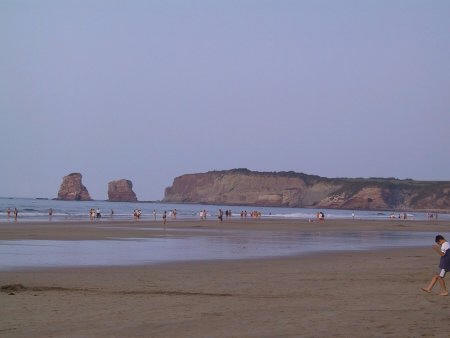
Gascony is a magnificent part of SW France, historically bounded to the West by the Bay of Biscay and to the South by the Pyrenees Mountains. Today these co-ordinates account for the regions varied attractions. Both the ski slopes of the Pyrenees and the bleached beaches of the Atlantic coast lie within easy reach of a days outing.
Unspoilt and unpolluted, it is dominated by rolling hills interrupted only by large areas of natural forest and verdant river valleys. Scenic Roman routes, blissfully free of traffic, run along the ridges and link the bastide villages. At their hearts, local markets pulse beneath the medieval colonnades. The area is home to the gregarious Gascon as it was to the real life D’Artagnan, musketeer of legend. Their bountiful soils account for a rich culinary heritage. Essentially a peasant cuisine based on duck and goose fat it has been of critical influence to some of the finest chefs working in Europe.
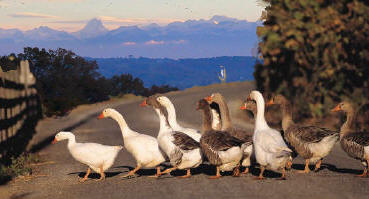
Pierre Koffman of the Tante Claire in London was born in Tarbes and spent many formative hours in his grandmothers kitchen in the countryside. Michel Guerard, famed for his cuisine Minceur, is based at Eugenie les Bains and continues to set the standard for fine food in the region.
On a more accessible level there are treats to be found in the simple country restaurants where one habitually finds a robust, carefully prepared 5 course menu inclusive of wine for 10 euros. Another way to enjoy the local fare is to subscribe to the “repas du chasseur” or one of the meals at the local fetes. Here lunch can stretch through to the evening and would include the likes of Salmis de Palombe preceded by lashings of foie gras on warm toast, and followed by venison steaks with local wild mushrooms. This could be rounded off by a light salad, brebis cheese, and an apple croustade. Wash it down with some of the local wine and set the meal beneath the leafy plain trees in the village square and you begin to get a feel for the quality of life to be found in this remarkable region.
In fact “Quality of Life” sums it up. The region is unequalled for its unspoilt rural setting, natural and architectural beauty, low crime levels, lack of traffic and pollution fine wines, armagnac, cheeses, fine local produce, easy access to both skiing and the Atlantic coast, great golf courses……....
GASCONY ARCHITECTURE
To the south the construction is based on river stone (flint), and to the east the architecture is poorer with many farmhouses being constructed with mud bricks. Across the whole region the countryside is dotted with handsome stone built farm houses chateaux and elegant manoirs tucked into wooded parks. The houses are often characterised by terre-cuite floors, wide stone fireplaces, carved oak staircases, and built in fruit-wood cupboards each with characteristics unique to their district and respectful of its cultural heritage.
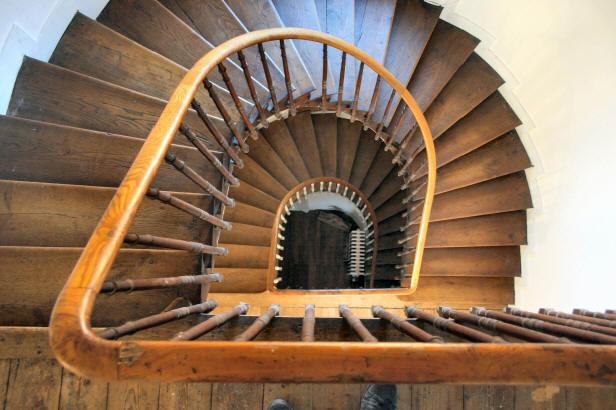
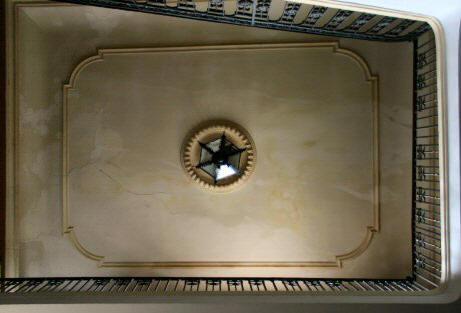
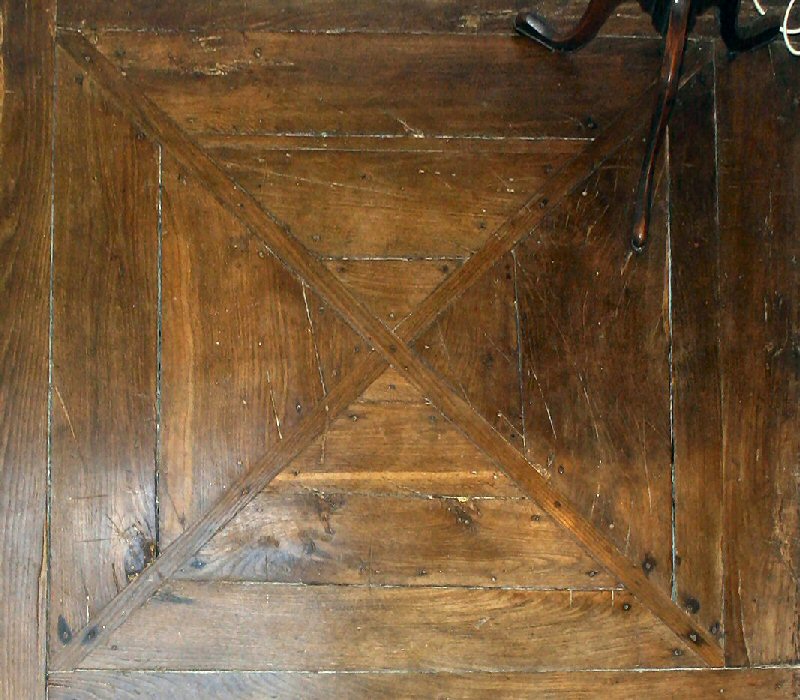
The diverse styles of Architecture reflect the regional cultures and the evolution of building techniques through the ages. The traditional building materials were determined largely by the proximity to natural resources. In the northern Gers; one finds a predominance of sand-stone, to the west there with the influence from the Landes, more colombage (exposed oak framework packed with straw and mud). Architects are again using similar materials for construction due to their qualities of insulation. There are three traditional categories of roof tile used in the area. The tuile picon, a flat baked clay tile, often used on the steeper roofs in the Bearn and for fetage in the Gers. The gersois roofs are usually have a flatter pitch and make use of a tuile roman, a bevelled clay tile. These roofs need more maintenance as the tiles tend to slip. As you approach the mountains the tiles progressively shift to slate. With such a wide range of property in Gascony finding a house in this part of the world is a wonderful adventure.
GASCONY WINES
Madiran encompasses the area around the village of Madiran. Madirans red wines are produced ffrom the tannic and earthy Tannat grape. Château Bouscassé Château Montus, Laffitte Teston, Laougue, and Domaine du Crampilh are a few of our favourites.The wines are based on Tannat grapes sometimes blended with Cabernet Sauvignon or Cabernet Franc to soften it. White wines in the area are labeled "Pacherenc du Vic Bilh". Gros and Petit Manseng produce a juicy, spicy wine that is excellent with foie gras.
Jurançon in the foothills around the town of Pau, produces only white wines; they are similar to those of Pacherenc du Vic Bilh, but more flowery. Varietals are Courbu, Gros Manseng and Petit Manseng. The wines are generally dry, but sweet if affected by Botrytis cinerea. Domaine Cauhapé, Domaine Larredya and Clos Uroulat are our favourites. Buzet is next to Armagnac. It produces primarily robust, aromatic reds pressed from the grapes of the Bordeaux which offer good value.
The Armagnac region has three appellations, Bas-Armagnac (where the most delicate,fruity brandy comes from), Tenareze and Haut-Armagnac. First distilled as a medicine in the 13th century, Armagnac, a single-distillate (in contrast to Cognac, which is a double) is the oldest brandy in France. Four varieties of grapes are commonly used: Folle Blanche, Ugni Blanche, Colombard and Baco. When Folle Blanche is used in high percentage and aged for 15 years, it has fine texture and flowering fruit. But it’s hard to grow and sparsely employed. The hybrid Baco is the other star grape. Aged, it tastes like prunes and nuts; however, the AOC board has decided hybrids will no longer be allowed after 2010. But as most Armagnacs peak between 18 and 30 years, there should be plenty of product around. Cotes de Gascon wines and Cotes St Mont are produced in this area, easy drinking red wines and fruity white colombelle are favourite summer choices. With foie gras dishes, try a golden-white Domaine du Tariquet or a chilled glass of Jurancon as a sundowner on the terrace of a Gascon farm house.




